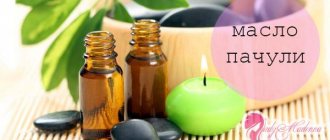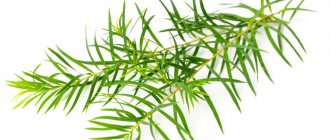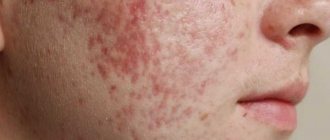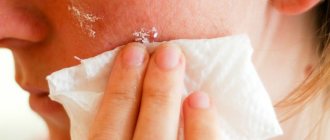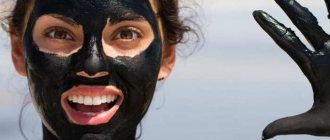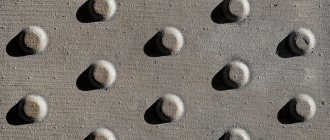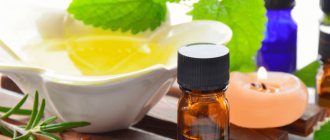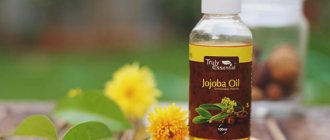There are many different ways to get rid of acne. But, unfortunately, drug treatments are not completely safe.
For the most part, medications negatively affect the functioning of the liver, intestinal microflora, and immunity. And allergic reactions with this treatment are not uncommon.
The safest methods of getting rid of this unpleasant and unaesthetic skin lesion are techniques that involve the use of natural products - herbs, tinctures, essential oils.
Since ancient times, essential oils have gained fame as the most effective means for caring for facial skin and hair.
The rich palette of these exclusively natural substances allows you to choose the composition for any cosmetic procedure or treatment.
How to choose the right essential oil to treat acne?
The choice of essential oil for each specific case should be based on a detailed study of the action of a particular “essential”.
It is necessary to familiarize yourself with the indications and contraindications of a particular oil .
You should also pay attention to the smell of the product . If the aroma causes discomfort, irritation, dizziness or nausea, you should stop using this product.
Nowadays you can buy natural essential oils everywhere. So there are no strict restrictions on the place of purchase - it can be either a pharmacy or a cosmetic store.
It is recommended to pay attention to the expiration date and packaging of the oil . The optimal packaging is a jar with a dispenser, made of dark thick glass.
How to check for an allergic reaction before using an essential oil?
When planning to use essential oils for cosmetic and medicinal purposes, you should test for allergic reactions .
To do this, you need to dilute two or three drops of “essential” in a teaspoon of any oil (you can take sunflower, olive, etc.). Apply the resulting composition to areas with sensitive skin. Usually this is the elbow, wrist, or area behind the ear.
If after half a day no irritation, redness or other negative reactions have appeared on the skin, then the selected essential oil can be safely used.
Jojoba oil for the face: benefits, application, mask recipes, reviews from cosmetologists
Since ancient times, women have figured out the secret: if you rub your skin with oils, it will be beautiful, moisturized, velvety and without deep wrinkles. And the fair sex usually saw the most noticeable effect after using jojoba oil. However, later, when innovative cosmetics began to appear on the market, natural products were forgotten for a while. And only recently the fashion for natural beauty products returned, after which cosmetologists remembered the magic oil - jojoba.
Where does it come from, and what substances does it contain?
Benefits of jojoba oil for the face
The source of the oil is nuts collected from a tree called Simmondsia sinensis, or simply jojoba. From these nuts, after pressing, a golden-colored substance is obtained, which at a temperature of 0 degrees takes on a solid state and becomes like wax.
This oil contains a huge amount of substances that have a beneficial effect on the skin, and is especially recommended for use in the preparation of facial cosmetics.
In its composition, the oil is similar to natural human sebum, and thanks to this, it penetrates well into the skin, thereby saturating it with proteins, vitamins and fatty acids. These substances help tissues remain elastic and increase skin elasticity. Therefore, jojoba oil is used for wrinkles and anti-aging skin.
In addition, the oil helps fight inflammation on the skin due to its antioxidant properties, which is why jojoba oil is often used for acne.
It is also hypoallergenic, so it is absolutely safe even for children’s skin.
It is only worth considering that the oil is useful not only for the skin, but also for the hair - it enhances its growth, so if you have a mustache or fuzz on your face, you need to use the product with caution.
Jojoba oil for face: application
To get the best results from using the oil, you need to know how to use it correctly. Cosmetologists recommend using this product for women with dry skin, ladies who want to refresh their complexion and restore skin elasticity, and those with oily skin prone to irritation and inflammation.
But the most noticeable effect can be seen when women over thirty apply jojoba oil to their face for wrinkles. The fact is that as a woman approaches forty, her hormonal background changes, and therefore her cells work less well. Because of this, deep wrinkles appear, the oval of the face changes, the skin becomes flabby, dull and less elastic. Using oil will help cope with these problems and activate collagen production.
READ ALSO: Acne on the chin in women: which organ is wrong?
This product is suitable for even the most delicate skin, which is why jojoba oil is also used for wrinkles around the eyes. Reviews left by women suggest that if you use the oil regularly, you can look a couple of years younger.
See also: “Rejuvenating face masks at home after 40 years”
It’s also convenient to have the oil on hand in winter, when your lips become chapped and your skin peels. It also copes well with these problems!
The oil has a structure that does not clog pores, so the skin breathes and gradually transforms. The product also kills microorganisms that cause acne. This is why the oil is also recommended for treating skin inflammation. It also helps small wounds on the face heal faster.
Jojoba oil can be used in different ways. Some people simply apply healing wax instead of cream, while others add it to other products or make face masks with jojoba oil. Here are some recipes for popular masks.
Homemade face masks with jojoba oil
In addition to jojoba oil, there are other oils that contain components that are beneficial for the skin. And by mixing them, you can achieve an amazing effect. Usually masks with oils are made every other day, or twice a week. You can also add other natural and skin-beneficial products to the oils. Here are popular recipes for face masks:
Mask with jojoba oil and avocado oil
This mask is used to reduce wrinkles. To prepare it, in addition to jojoba oil, you will need avocado oil. The products must be mixed in equal proportions, and then four drops of fennel extract and anise extract must be added to the resulting mixture. The mask is very simple to use; it is applied to areas of the skin where there are wrinkles in the morning and evening; it is advisable to carry out the procedure every other day.
Clay mask
And this mask perfectly rejuvenates the skin and restores it. In a deep bowl, mix two teaspoons of the following products: yogurt, honey and jojoba oil. Everything is mixed well, and then two teaspoons of blue clay are added to the mixture. It should turn out to be a paste; if the mixture is very thick, you can add a spoonful of thermal water. Apply the mask to the face for thirty minutes, after which it is washed off with warm water. The remains can not be thrown away, but applied to the décolleté area.
READ ALSO: Oatmeal cleansing face mask for blackheads
Mask with yolk
And this mask restores elasticity to the skin and tightens the oval. Two teaspoons of jojoba oil must be combined with one yolk and mixed. Then two teaspoons of lemon juice and one spoon of honey are added to the mixture. The mask is applied to a clean face and left for fifteen minutes. After this, you need to wash it off with warm water.
Jojoba oil for the face: reviews from cosmetologists
Marina: “First of all, I try all the products on myself, and only then advise them to my clients. This happened with jojoba oil. I bought an inexpensive bottle at the pharmacy and began applying it to clean skin before bed. It is used very sparingly; a few drops are enough for the entire face. At first the skin is a little oily, but after forty minutes the oil is completely absorbed. And in the morning the face is smooth, the skin is soft and velvety. After three days, I noticed that the pores became smaller, and the minor inflammations that arose as a result of hormonal imbalance had practically resolved. Then I suggested trying the oil to my client, who comes to me regularly for cleansing, she is thirty-six years old, and she already has noticeable wrinkles around her eyes. When she came back a month later, the skin around her eyes looked much better, and the wrinkles were almost invisible. My skin is good, so I started adding oil only to masks, but I advise my clients with skin problems to use it daily before bed instead of night cream. The oil helps to quickly cope with pimples and inflammation.”
Lydia: “I want to say that jojoba oil is better than any cream. It is universal, helps cope with all skin problems, and can be used at any age. After just a month of use, you can see a good effect in the mirror. I advise everyone!"
Maria: “I love only natural products, and I also recommend them to my clients. And I never tire of repeating that beauty does not always require a lot of money. Oils sold at pharmacies work wonders. And one of them is jojoba oil. It can be applied to the face, chapped skin of the hands and lips, and hair. The result is visible immediately. Try it and you will see for yourself!”
See also: “Apricot kernel oil: application“
How to use essential oils?
It is strictly necessary to remember that using “ether” in its pure form is strictly prohibited.
The only acceptable option is to smear a single pimple or two. For this case, use a cotton swab with which you carefully apply the product directly to the source of inflammation.
In all other cases, the essential oil should be diluted . The following products can serve as the basis for breeding:
- cosmetic lotion;
- face cream;
- mask for the face;
- cosmetic milk;
- fatty oil.
The most popular is the use of base oils . For this purpose, you need to choose a product that does not clog pores.
We can recommend the following oils:
- grape seeds;
- olive;
- apricot;
- peach;
- avocado oil;
- compositions using milk thistle;
- sea buckthorn;
- rosehip oil;
- oil containing black cumin.
It is not recommended to use other oily bases, as their use clogs pores and prevents them from breathing, which leads to deterioration of the skin, rashes, and irritations.
When mixing the base substance with essential oil, the following proportions should be observed : 7 drops of essential oil per 100 g. basics. If there are several essential oils, then their total amount should not exceed the specified norm.
Sea buckthorn oil for acne
The product has restorative and wound-healing properties, regenerates the skin and actively fights.
Sea buckthorn oil for acne is applied pointwise using a cotton swab. If the skin affected area is large, the oil is preheated in a water bath, and then the inflammation is carefully applied.
Please note: during the action, the oil turns the face yellow, but is easily washed off with cleansers.
Sea buckthorn oil for acne is used to prepare masks:
- Sea buckthorn oil with oatmeal. 1 tbsp. l. ground oatmeal flakes are mixed with 1 tsp. sea buckthorn oil and 1 yolk. The flakes are used for thickness, so you can add them as needed. The skin is pre-steamed, the mask is applied for 20 minutes and washed off, not allowing it to dry on the skin.
- Sea buckthorn oil with clay. 2 tbsp. l. clay is mixed with 1 tbsp. l oil and pour in water until mushy. The mask is applied in a thick layer and washed off after 20 minutes. After this, acne is additionally treated with sea buckthorn oil.
Clove essential oil for acne
Many people know such an oriental spice as cloves.
It is made from the buds of the evergreen shrub of the same name. Oil is also produced from the same bush. Leaves and branches of the plant are used for this. But the highest quality product is considered to be the one extracted from the kidneys.
This essential oil has a light yellow, almost transparent tint. Over time, the liquid may darken. The ether has a pronounced sweetish, spicy aroma with fruity notes.
This essential oil has powerful anti-inflammatory and antiseptic effects .
It fights well against various bacteria. That is why clove oil is most often used to care for problem skin.
This product perfectly removes acne and pustules. The oil does an excellent job of healing wounds, but at the same time, it tones and refreshes the skin well.
In addition to the above method - diluting the essential oil in base oil or cosmetic milk - you can also make a homemade tonic using clove oil. To do this, take thirty drops of essential oil into half a glass of clean water. This mixture should be wiped over the affected areas of the skin several times a day.
It is important to strictly monitor the proportions! Also, pregnant women and people prone to increased excitability of the nervous system should avoid using clove oil.
Acne problem
The main task in the fight against acne should be comprehensive treatment, not to heal, but to treat the problem “from the root” and affect the entire body, both outside and inside.
People do not always try to finish what they start in order to completely recover from acne completely. Seeing that there is no quick effect or, on the contrary, there is, then even in this case they begin to believe that they have done everything possible and that is enough. But this is by no means true!
You need to fight, and don’t forget to use the purchased products in the fight for beautiful skin. To get the most positive result in this struggle, you need to pull yourself together and approach the problem closely from all sides. Give preference to healthy food, a healthy lifestyle and natural skin care products.
An excellent remedy in this fight are essential oils for acne and acne! They have natural ingredients, and a whole army of useful vitamins and other substances that are designed to fight for your health and beauty!
Every person wants to have beautiful and healthy skin. After all, only when we are faced with skin problems, when irritation, pimples and blackheads appear, do we truly begin to appreciate what nature has given us from birth clean and healthy.
Acne leaves “holes” in the skin, which are stretched out pores. Acne leaves scars that can be fought for years and in many cases to no avail.
And all this happens only because the wrong skin care products were chosen, even if they are very expensive, this is not an indicator of their effectiveness.
Geranium oil
This essential oil is obtained by processing the leaves and stems of fragrant geranium.
This plant is a close relative of the well-known indoor flower. The resulting oil has a greenish-yellow hue.
Its smell is extremely pleasant - herbaceous and fruity, interspersed with aromas of rose, lemon and mint.
People with any skin type can use this essential oil.
The main purpose of the oil is to soothe skin irritation.
It calms inflammatory processes, reduces sebum production and normalizes sweating. Geranium oil has a beneficial effect on the immune system and is a barrier to the formation and development of skin infections.
When using fragrant geranium essential oil, special attention should be paid to checking for allergies .
Also, you should not use the oil for more than three weeks in a row, as it actively lowers blood sugar levels. This drug is contraindicated for pregnant women and women taking oral contraceptives.
Spruce essential oil
Spruce oil is often used to treat respiratory diseases.
It is also good for disinfecting rooms and adding freshness. But its role in the process of skin treatment is no less significant .
This essential oil has a transparent greenish tint and a coniferous, resinous aroma. Using it in masks will have an effect on the nervous system - it will relieve tension and increase performance .
This product has an anti-inflammatory and antibacterial effect. The oil will increase the protective functions of the skin and speed up the healing process.
Some people are hypersensitive to spruce oil, which requires careful allergy testing. Also, pregnant women should not use the product.
Recipes for effective acne masks
Oatmeal and clay perfectly complement the effect of aromatic oils in masks.
Therapeutic oatmeal mask
Mix 2 tbsp. l. oatmeal with low-fat kefir until you get a paste. Add essential oils:
- tea tree - 3 drops;
- birch - 1 drop;
- lavender - 1 drop.
This mixture is applied to a cleansed face and washed off after 15 minutes.
Antiseptic mask
Tea tree oil is known for its antibacterial properties. And clay will enhance the effect of the active components and act as a base.
Mode of application:
- 1 tbsp. l. dilute white clay with mineral water.
- Add 3 drops of tea tree aroma oil.
- Apply the mixture to your face.
- Wash off the mask after 20 minutes.
Drying kaolin mask
Dilute 1 tbsp. l. white clay with chamomile decoction (to the consistency of sour cream) and add one of the mixtures below.
Eucalyptus mixture:
- eucalyptus - 1 drop;
- thyme - 1 drop;
- rosemary - 1 drop.
Sage mixture:
- geranium - 1 drop;
- cloves - 1 drop;
- sage - 1 drop.
Apply the mask for 15 minutes. After this, rinse with warm water.
Atlas cedar oil
Unfortunately, many unscrupulous manufacturers sell oils made from various trees under this name.
Therefore, when choosing this ingredient, you should give preference to proven, reputable manufacturers . It is worth making sure that the essential oil is made from cedar, which grows on the slopes of the Atlas Mountains in Algeria.
The product has a yellowish tint and a thick consistency. The smell of the oil is woody, warm, bitter.
For the treatment of acne, such features of cedar essential oil as astringent and antiseptic effects . Essential oil soothes inflamed skin, makes it elastic and fresh.
This product is especially popular among the stronger sex, as it has a characteristic “masculine” aroma .
This product is also not recommended for pregnant women.
Melissa officinalis essential oil
Colorless lemon balm oil has a sharp, invigorating, fresh aroma with hints of lemon.
A distinction should be made between 100% natural essential oil and oil obtained by processing lemon or lemongrass oil over lemon balm herb.
In the latest copies, the percentage of lemon balm oil is about five to seven percent.
Such differences in manufacturing affect the price of the product.
This product is valued in cosmetology for its effective fight against acne..
Thanks to its action to normalize the functioning of the sebaceous glands, essential oil promotes a speedy recovery of the skin. This oil will work most effectively on oily skin.
Possible negative effects when used on sensitive skin. A test for allergic reactions is necessary. The oil is contraindicated for pregnant women.
Patchouli oil for acne
This oil is extracted from the leaves of a tropical shrub. Often, the leaves are initially pre-fermented. As a result of such procedures, the color of the product may change. The product can be yellowish, brown, greenish and even brown.
The aroma of fresh patchouli oil may contain sharp notes of greenery and sweetness, but in a more mature product these shades disappear. The smell becomes sweetish and pleasant.
It is worth considering that the oil has a rather thick texture . It may clog the dispenser. In this case, the dispenser should be rinsed with warm water, and the oil itself should be slightly warmed before use to make it easier to remove from the jar.
essential oil normalizes the functioning of the sebaceous glands and tightens pores . The oil is used in the treatment of acne and purulent rashes. A very effective remedy for eliminating post-acne, scars and scars left after acne.
In addition to pregnancy, contraindications for the use of patchouli oil are stomach diseases - ulcers, gastritis, etc.
Camphor oil for acne
This remedy is considered antiseptic and bactericidal. Used to treat purulent wounds and inflammation.
Camphor oil for acne makes acne invisible and heals active inflammatory processes. The skin becomes lighter and with prolonged use, small acne scars and age spots disappear.
Treatment mask for acne: take 2 drops of milk thistle oil, camphor, black cumin, mix everything and apply to the face. Make a mask before going to bed and do not wash it off.
The essence of using camphor oil is that it actively prevents the occurrence of new inflammatory processes.
Rosemary essential oil
Rosemary oil is obtained from the flowers and shoots of the plant. The resulting liquid has a poorly defined yellow tint. The aroma of the oil is minty, herbaceous, with hints of wood.
Rosemary essential oil has a pronounced antibacterial and antiseptic effect.
Thanks to its astringent properties, it tightens pores and tones the skin .
Used to combat acne, blackheads, and post-acne. The oil has an invigorating effect, so it is not recommended to apply it at night.
Contraindications for the use of this oil are diseases such as epilepsy and hypertension. Pregnant women and those with very dry, sensitive skin should refrain from using rosemary essential oil.
Using mint oil on the face
The product is actively used for:
- oily skin (normalizes the production of subcutaneous fat, tightens pores well);
- inflamed skin (helps remove acne and its marks);
- aging and dull skin (moisturizes and tones, preventing the formation of wrinkles and further fading);
- tired and dull skin (refreshes and tones the skin).
In addition to these properties, the oil has many other equally important ones:
- eliminating redness;
- elimination of spider veins on the face;
- improvement of complexion;
- restoration of the protective functions of facial skin;
- elimination of herpes on the lips;
- treatment of sunburn;
- treatment of bacterial dermatitis.
Lavender essential oil for acne
This essential oil is obtained from the stems and inflorescences of Lavender officinalis. The product can have different shades - from light yellow to dark green. In the aroma, in addition to the smell of the flower itself, woody notes can be noted. Overall the smell is cool and refreshing.
The oil is compatible with any skin type.
It can be used against redness and inflammation , as well as itching and flaking .
Essential oil dries out existing pimples and prevents their further appearance and spread to other areas of the skin. The regenerating properties of lavender oil will help heal acne and other skin damage. In addition, lavender actively removes toxins from the skin, cleanses and tones it .
For cosmetic purposes, lavender works great when combined with tea tree essential oil.
Benefits and properties of jojoba oil for the face
The cosmetic product is popular. It cannot be classified as a budget solution. However, the high effectiveness of the product allows you to see positive changes with minimal use. The advantage is that it can be used on delicate skin types.
To obtain a cosmetic product, Simmondsia fruits are processed. It is an evergreen shrub native to the US-Mexico border. Research has proven that the fruits of the plant were used two thousand years ago. The solution retains its valuable properties for many years.
The plant product resembles waxy fat or spermaceti. Modern jojoba oil is produced in the following countries:
- USA;
- Mexico;
- Paraguay;
- Australia;
- Costa Rica.
The high cost of the product is due to the characteristics of growing the plant. Simmondsia is demanding on climatic conditions. The fruits are collected exclusively by hand.
To preserve the beneficial properties, the so-called cold pressing method is usually used to obtain oil. For cosmetic purposes, unrefined saturated pomace is used.
Jojoba oil has a golden hue and a subtle nutty odor.
The uniqueness of the product lies in its composition. The plant compound resembles sebum. Due to their good absorbent properties, the biologically active components present quickly penetrate the body.
The product includes amino acids and protein, reminiscent of collagen in its effects. These substances give the skin softness and elasticity. Tocopherol helps stimulate the regeneration of cellular elements and facial rejuvenation. This component also extends the shelf life of the solution.
The cosmetic product evens out the skin tone. Using the product allows you to abandon foundation creams. In this case, the face will look natural.
The oily solution is not comedogenic. It can be applied to oily skin types. When using the product, it forms a breathable layer that allows the dermis to breathe.
The use of the product does not lead to the appearance of a greasy sheen. At the same time, the necessary moisture of the skin is maintained. The oil solution protects the skin from the negative effects of the environment, in particular from ultraviolet rays.
The unique composition of jojoba oil includes:
- Omega-9, which repairs damage to the epidermis and restores elasticity and firmness to the skin;
- fatty acids (oleic, docosenoic, palmitic) ensuring the preservation of moisture balance;
- alcohols that improve the condition of blood vessels and nourish the skin with useful substances and oxygen.
We recommend reading: Shungite water: properties, how to prepare and drink
Siberian fir oil
Fir oil contains a lot of useful substances that primarily have a beneficial effect on the condition of the skin . Separately, it is worth highlighting Siberian fir oil. This is the tool that is most useful.
The liquid obtained from young branches and cones is almost transparent. The oil has a deep and fresh aroma of pine needles.
Siberian fir essential oil has a strong anti-inflammatory effect . It copes well with inflammatory processes, removes acne and rashes. It is also worth noting the cleansing functions of the oil - fir removes blackheads from the skin.
With long-term use of fir oil, a decrease in skin oiliness is observed. The face looks fresher .
Using oil in a targeted manner requires extreme care. When applying the product to the affected area, make sure that the oil does not get on healthy skin.
Milk thistle oil for acne
Milk thistle contains a unique substance silybin (silymarin), which restores and protects body cells from damage. That is why the oil is recommended not only for external, but also for internal use, which cleanses the liver and removes toxins, which has a beneficial effect on the condition of the facial skin and makes it clean and non-inflamed.
To do this, for 2 months three times a day, 1 tbsp. l. milk thistle is mixed with a medium-sized tomato grated on a coarse grater. The mixture is consumed half an hour before meals. The results will be noticeable after 2-3 weeks of use!
- 1 tsp. boric acid powder;
- 3 packages of crushed streptocide tablets;
- 10 tables chloramphenicol;
- 10 aspirin tablets;
- 100 ml of clean cold water;
- 80 ml alcohol (96% strength).
Apply to inflamed skin morning and evening, do not wash off! The mixture is stored in the refrigerator and used for up to 3 weeks.
Apply lotion to the skin, alternating with spot application of milk thistle oil.
Damask rose oil for face
It is not for nothing that the rose is considered a symbol of femininity and beauty. The complex chemical composition of this flower allows the use of products obtained from it for a variety of purposes.
Damask rose oil is one of the most complex natural substances in the world.
It is worth noting that 100% Damask rose oil is very expensive . There are many products that contain a small percentage of this invaluable elixir.
This essential oil perfectly tones problem skin , restores damaged blood vessels, thereby eliminating redness. The oil has an antiseptic and anti-inflammatory effect.
Top best oils for pimples, acne, blackheads
Tea tree essential oil is the best for acne!
It rightfully occupies the top 1 of the best cosmetic and essential oils for acne on the face . Of all the oils, tea oil has the strongest anti-inflammatory and antibacterial properties.
In addition, tea tree oil dries and stimulates skin regeneration. Best suited for oily and problem skin !
Jojoba oil
Tea oil competitor #1. It costs a penny, but has only one contraindication! Suitable equally well for all skin types.
The main property is antiseptic . Has a strong anti-inflammatory effect. The oil also nourishes and helps the skin recover faster.
Black cumin oil
The main advantages of black cumin oil are its strong anti-inflammatory and antibacterial properties . In addition, the oil has a good regenerating effect.
The oil works at “5+” for all skin types.
Rosemary essential oil
Rosemary essential oil will be your best friend if the cause of acne lies in excessive or insufficient sebum production.
The main property is the regulation of the sebaceous glands . A pleasant bonus will be a strong antiseptic and anti-inflammatory effect. Best suited for oily and problematic skin !
Burr oil
Burdock oil closes our top of the best oils for pimples, blackheads and acne. Universal oil : suitable for both dry and oily skin types.
The main advantage of the oil is its anti-inflammatory effect . In addition, the oil has good anti-aging, protective and regenerating properties.
Lemon essential oil
This aromatic oil is obtained by processing the zest of the fruit. The resulting oil is light yellow or greenish in color. Over time, the color tends to darken. The recognizable cool, fresh aroma makes this oil indispensable both in cooking and in cosmetology.
essential
oil stimulates collagen production , which promotes rapid regeneration, healing and restoration of the skin.
Lemon essential oil normalizes sebum production and tightens pores . Oil is also actively used to remove blackheads, as it helps to effectively exfoliate dead cells and improve skin tone.
Lemon oil is suitable for almost all skin types. For greater effectiveness, you should wisely choose the base product for creams or masks.
Peppermint essential oil
This essential oil is obtained from the leaves and tops of the plant. The aroma of the product is very intense, cool and refreshing. The smell of this essential oil drowns out all other notes of the composition.
This oil is actively used in cooking and perfumery. But in the field of treatment and skin care, mint essential oil also has a place.
Mint works great on oily skin. It removes inflammation, reduces sebum production and tightens pores. Has antiseptic and antibacterial effects .
This oil is not recommended for use on very sensitive skin. Under no circumstances should it be applied to the skin around the eyes. You should refrain from using essential oil if you have an allergic rhinitis. Pregnancy and breastfeeding are also contraindications for the use of peppermint oil.
Jojoba oil for acne
In fact, this oil is not such. This product is a liquid wax . It is extracted from the nuts of an evergreen shrub that grows in the hot corners of America.
The resulting liquid has a golden hue and a thick consistency. Oil freezes at subzero temperatures. The oil has virtually no odor.
Jojoba oil contains a protein that functionally resembles collagen. And in its properties, jojoba is similar to spermaceti, a common ingredient in many cosmetic products. Such features make this oil extremely popular in cosmetology .
Essential oil perfectly removes pimples and prevents the appearance of new ones, relieves inflammation and disinfects the skin. What’s remarkable is that this oil can work with both oily and dry skin.
Why you should love jojoba oil
The beneficial properties of each oil are determined by its chemical composition. The oil contains unsaturated fatty acids (palmitic, behenic, erucic, oleic, gadoleic, palmitoleic), amino acids, collagen, minerals, vitamin E, as well as fatty acid esters.
And it is precisely because of its composition that jojoba oil has the following beneficial properties for the skin:
- The strongest antiseptic effect is the main advantage of the oil . Jojoba oil can destroy germs and bacteria - the main causative agents of acne. In addition, the oil does not clog pores, which prevents the appearance of purulent formations and comedones during use;
- Anti-inflammatory . The oil copes well with inflammation, which helps acne ripen faster. Normalizes the functioning of the sebaceous glands. Soothes the skin;
- Regenerating . Jojoba oil helps quickly remove red spots, marks and acne scars;
- Nutritious . The oil nourishes the skin with beneficial substances, which makes it beautiful, smooth, matte and without greasy shine.
And although jojoba oil is truly “thermonuclear,” the best effect can be achieved by using tea tree oil as a remedy for acne. This oil is No. 1 of all cosmetic or essential oils (in terms of strength).
Tea tree oil
Tea tree essential oil is perhaps one of the most popular remedies for combating skin problems . It perfectly disinfects, relieves itching and inflammation. The oil also actively fights acne marks and age spots.
When purchasing this product, you should pay attention to its authenticity. Often there are fakes or products that only partially contain tea tree oil.
In addition to the classic use (either spot use or mixing with a fatty base), various tonics are made from tea tree oil. To do this, you need to mix a few drops of essential oil with clean water or various herbal decoctions. Shake this lotion before use.
Castor oil for acne
Castor oil is excellent for problematic and dry skin, has moisturizing, nourishing, antibactericidal and anti-inflammatory properties, and treats age spots.
Choose castor oil for acne that is cold-pressed and comes in a dark glass bottle.
Before using the oil, an allergy test is carried out, because recinoleic acid, which forms the basis of the product, often leads to. If there is no redness on the bend of the elbow after a few hours, feel free to start treatment.
Castor oil for acne is applied with your fingertips to the skin before bed for 14 days. The product is not washed off.
The most effective recipes for preparing acne mixtures
- To one spoon of base add two drops of the following oils: tea tree, lavender, lemon . This product has antibacterial, antiseptic and astringent effects, cleanses well and slightly whitens the skin. The mixture should be applied daily, an hour before bedtime. Do not rinse off.
- For a tablespoon of base oil, take three drops of cedar oil, two drops of pine oil and one drop of geranium oil . Wipe your face several times a day. This coniferous product has antibacterial and cleansing properties. Works well with inflamed skin and pustular rashes.
- The following composition also helps against pustular inflammation. On a spoonful of oil, take three drops of lemon balm, two drops of bergamot and one drop of grapefruit . The mixture removes rashes, cleanses the skin, tightens pores and reduces sebum secretion. Needs to be applied several times a day.
- Recipe intended for dry skin. Add four drops of tea tree essential oil and a drop each of olive and rosemary oil to one beaten egg yolk .
- Antiseptic mask . Dilute one tablespoon of white clay with cosmetic tonic. Add a couple of drops of tea tree oil. Wash off the mask after twenty minutes.
We use jojoba oil for acne, blemishes and comedones, leaving them no chance
Now let's talk about the best ways to use jojoba oil for acne, blackheads and post-acne, which can save your skin from troubles in the shortest possible time.
A blend mask you'll love forever
This mask has a good antiseptic, nourishing and moisturizing effect on problem areas of the skin . To prepare the mask mixture you will need:
- 25 milliliters of jojoba oil;
- A teaspoon of calendula tincture;
- A few drops of tea tree oil, rose geranium, bergamot or lemon.
The ingredients should be mixed well, shaken and left to infuse for 24 hours in a dark glass bottle. Then take a small amount of the product and apply it to the skin with gentle massaging movements, trying not to get into your eyes.
As soon as 35 minutes have passed, you need to place a towel soaked in hot water on your skin. Allow the towel to cool, then gently wipe the skin, rinsing off any remaining mixture.
The procedure should be repeated two to three times until the face is completely clear of oil. After this, the skin is rinsed with water at room temperature to close the pores.
Anti-inflammatory lotion to soothe skin
To relieve inflammation , I recommend lubricating the skin with prepared lotions based on jojoba oil. Making lotion is quite easy. Here's what you'll need to take:
- Lavender oil;
- A tablespoon of jojoba oil;
- Three drops of tea tree oil.
Apply the lotion to the facial skin twice a day until inflammation is completely eliminated. It is worth noting that the lotion copes with its task 100%.
Here's another lotion recipe:
- Half a glass of milk;
- 20 milliliters of jojoba oil;
- A couple of drops of sandalwood, lavender, or bergamot oil.
The milk must be heated, the essential oils thoroughly mixed in it, and a gauze or cloth napkin should be soaked in the prepared mixture and applied to the skin until it cools completely.
A simple but super-effective recipe: mix jojoba oil and peach oil for acne in a 1:2 ratio. The result is that the aggressive action of jojoba will become much softer and safer.
Your skin will thank you for adding jojoba oil to your cosmetic products!
A couple of drops of jojoba oil can be added to ready-made cosmetics , for example, masks, creams, lotions. This will only enhance their effect, and your skin will thank you!
If you do not have confidence in purchased products, then the oil will be an excellent base for medicinal mixtures and homemade creams.
I note that this essential oil significantly increases the shelf life of such products.
Jojoba oil for spots, scars and acne marks
We have just covered several methods of using jojoba oil for pimples, acne and pimples. But how can you use jojoba oil to fight blemishes, scars or acne marks? Very simple.
Jojoba oil is an excellent replacement for a whole range of expensive products for blemishes and acne marks . The stains will go away quickly if you regularly use this mixture:
- 2 tablespoons oil;
- 2 drops of clove, cedar, or lavender oil.
Areas with stains should be lubricated with this mixture twice a day and applications should be applied for 20 minutes. This mixture-mask stimulates rapid skin regeneration, which will allow spots and scars to disappear without a trace in the shortest possible time.
But there is a better remedy for post-acne. Wheat germ oil helps with spots and acne marks much better, so don’t be lazy to read the special article at the link.
Recipe for a mask for blackheads on the face with jojoba oil
Comedones (blackheads) form in areas where there is oily skin - nose, chin, forehead. You can quickly lighten and get rid of blackheads by preparing a mixture with jojoba oil:
- 2 ml jojoba oil;
- A couple of drops of manuka essential oil;
- 5 ml hazelnut oil;
- Three drops each of geranium and tea tree oil.
- 2 drops grape seed or kukui oil.
All ingredients are mixed in a dark glass bottle. The mixture is stored in a dry place where light does not reach. Before applying the product, it is advisable to wipe the skin with mineral water.
For the face, 3-4 drops of the mixture will be enough. If after 15-20 minutes there is still a shine from the oil, then the residue can be blotted with a napkin. It is better to use the mixture early in the morning (before applying makeup) or before bed.
The effectiveness of using essential oils
The method of treating acne with essential oils is one of the safest and most proven. This method has virtually no contraindications and does not harm the patient’s health. And the effectiveness of this technique has been tested by more than one generation.
For optimal treatment, the proportions specified in the recipe for a particular product should be strictly observed. An overdose may lead to allergies or other negative reactions.
For home use, it is enough to have 5-7 different types of essential oils. No more than three should be used in each procedure. More complex recipes should be developed by a doctor or aromatherapist.
You need to create your own cosmetic preparations in special glass or ceramic containers.
Regular use of essential oils with precise proportions gives excellent results - reduces the number of acne, prevents the possibility of new ones, fights excess oily skin, tightens pores and tones.

